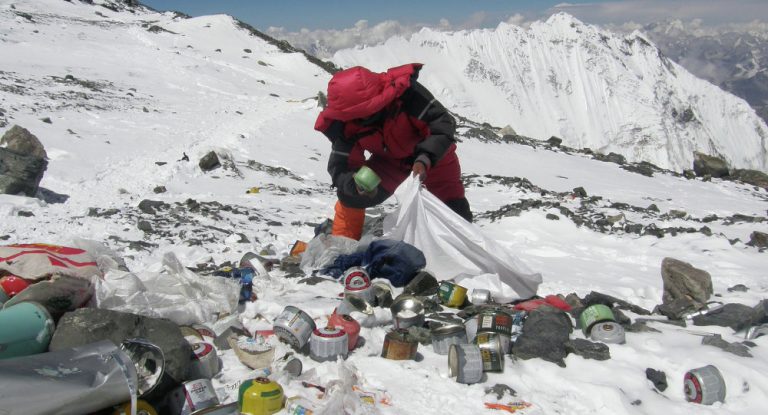
Salleri, Solukhumbu, May 29
Managing the trash has become a tall order in the Sagarmatha (Mt Everest) region.
The volume of waste has significantly climbed at Camp 2 and Camp 3, above the Base Camp on Mt Everest as the mountaineering expedition teams have failed to abide by the rules.
It is found that even climbers who went on mountaineering expedition to Mt Everest in this spring climbing season have not followed the rules and regulation.
Both Nepali and foreign mountaineers numbering hundreds reach the Base Camp annually for climbing the world’s highest peak. The Department of Tourism states that more than 400 climbers summited Mt Everest this year alone.
“The problem of increasing trash at the Base Camp and other camps above it is because the mountaineers and their assistants who come along with various paraphernalia and supplies required for the mountaineering expedition do not heed the rules and regulations for managing the waste,” said Pasang Nima Sherpa, himself a climber. Sherpa had climbed Mt Everest on May 21.
“There is some trash around Camp 1 and 2 but it is in high quantity around Camp 3 and 4,” Sherpa recounted.
There is growing concern over the mounting problem of litter in the Everest region. Lal Bahadur Waiba, an Everest summiteer, urged the concerned bodies to pay attention to timely management of the litter on Mt Everest.
“Although a bit of initiatives have been made for managing the waste it is hardly adequate. The government should formulate a special plan for addressing this problem,” he said.
Some mountaineering expedition teams even abandon their tents haphazardly at various camps. It is said the climbers fail to manage the waste they generate for various reasons.
The sixth-time Everest climber Yati Sherpa of Sotang said the quantity of trash on the Everest is growing year by year. Increasing level of waste matter on the mountain is gradually spoiling its aesthetic value. The culture of random leaving of waste materials on the mountain will tarnish its image in absence of timely interventions. Impact of climate change and an increasing flow of peoples/climbers have posed threat to the significance of this 8,848 meter- high mountain peak.
The Sagarmatha Pollution Control Committee (SPCC) is working for the waste management in the Everest area. The committee’s rule is that every individual on an attempt to scale the peak shall compulsorily bring 8 kilogrammes of waste per head back to its Namche-based office. The separation of biodegradable and non biodegradable waste materials takes place here and biodegradable is managed at the local level while the non-perishable waste is sent to Kathmandu, SPCC programme officer Kapindra Rai said.
The government charges refundable deposits up to US dollar 400 from any climber and the amount will be seized if it gets a report that the climber failed to turn up with the waste materials as demanded by the rule, according to Department of Tourism’s information officer Ram Prasad Sapkota. The good news is that the Department has so far not been compelled to seize such deposits. However, views of tourism entrepreneurs are that enforcement of this provision is not enough to just address the issues of waste management on the Everest.
Formal celebrations of the Sagarmatha Day would keep no meaning unless a long term solution was sought to the problem of Everest waste management. They demand the State come with a special programme to address the issue.










